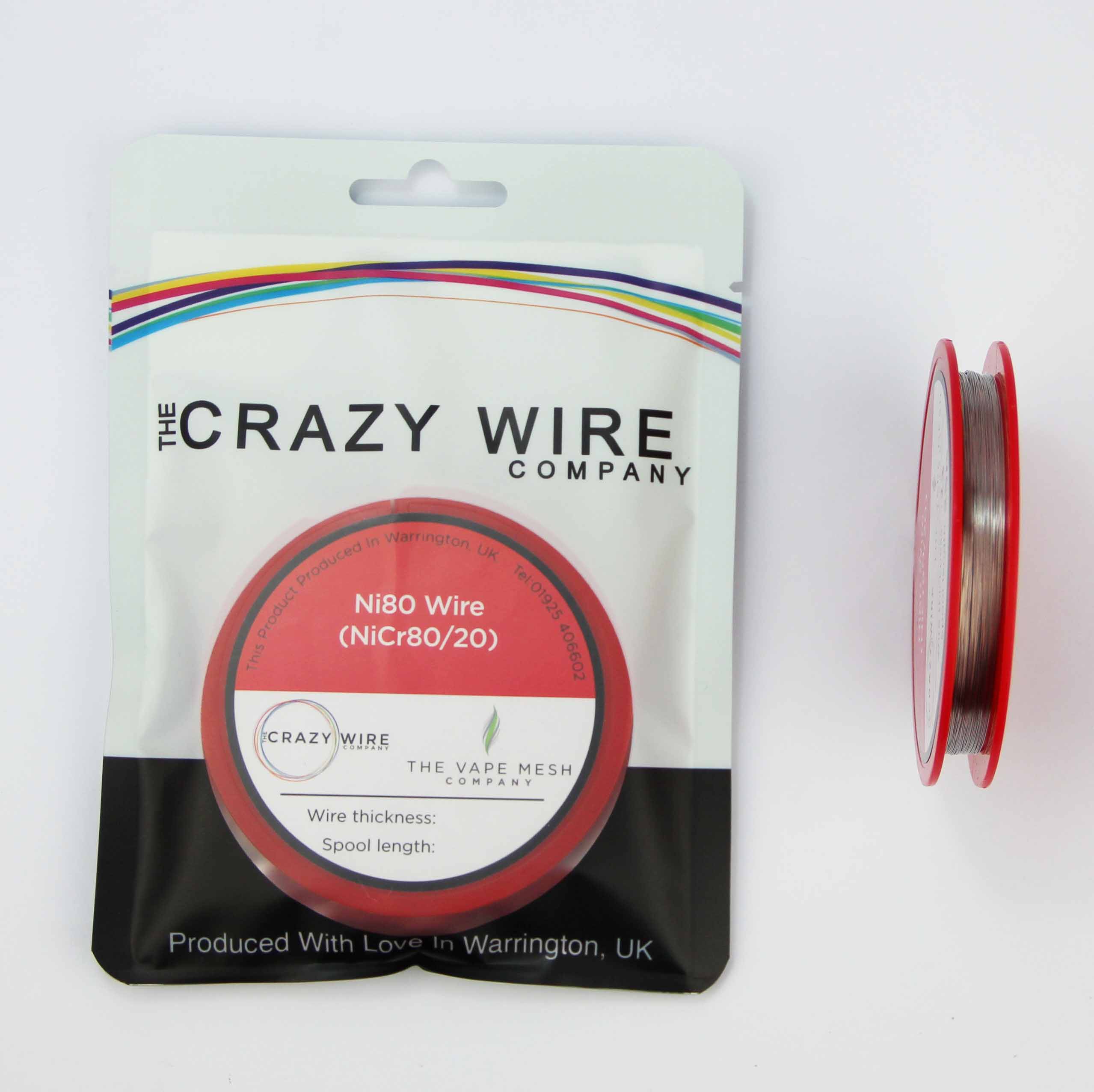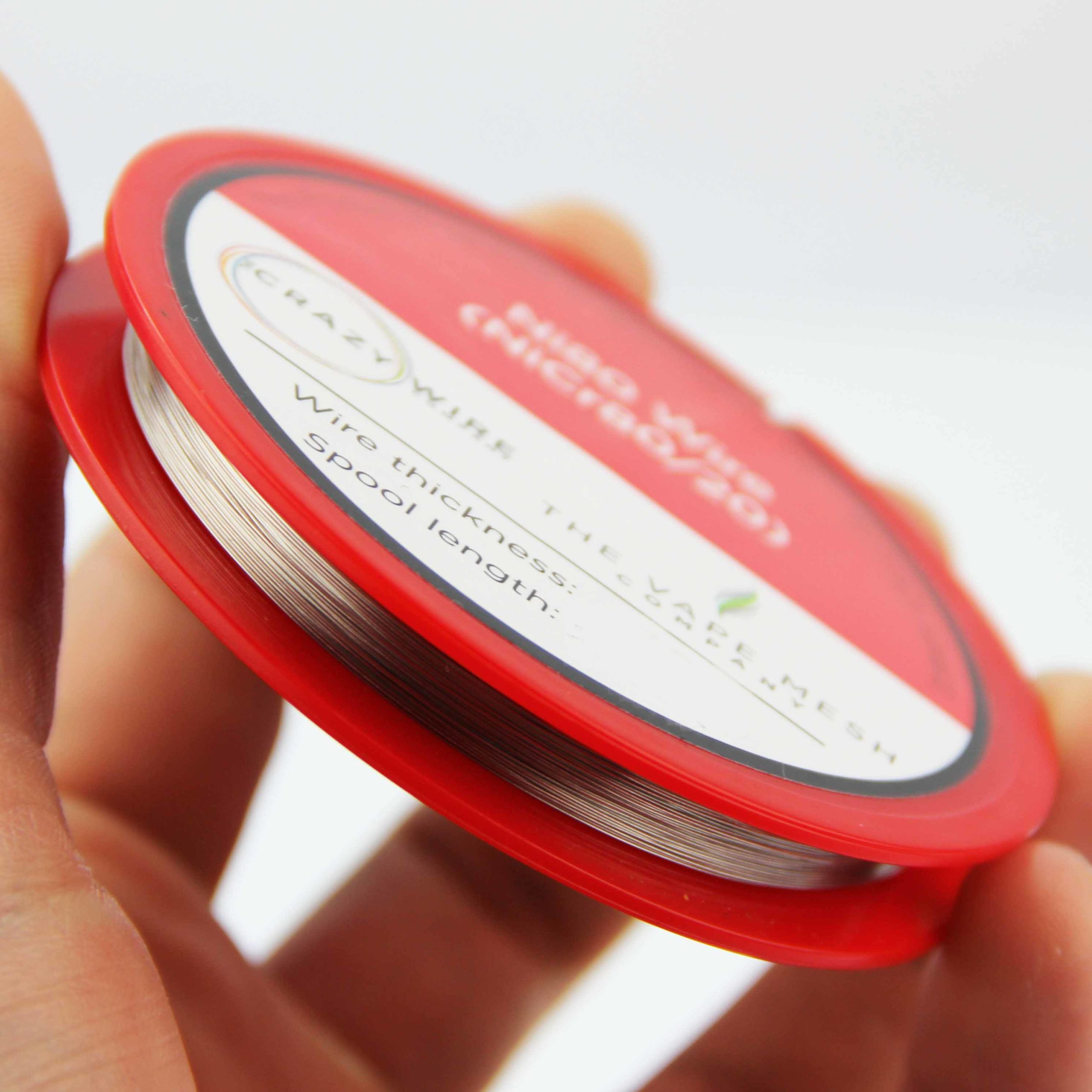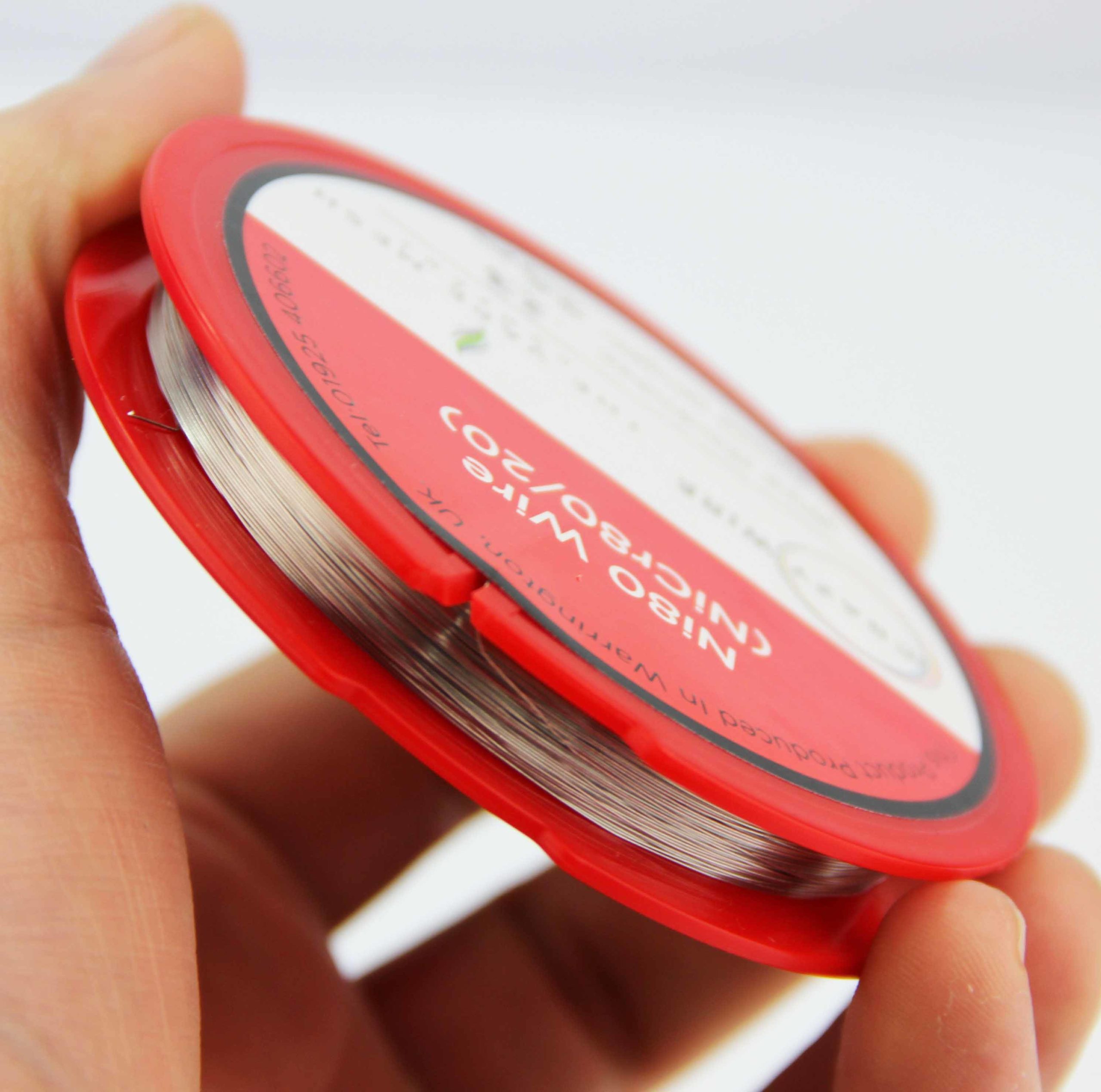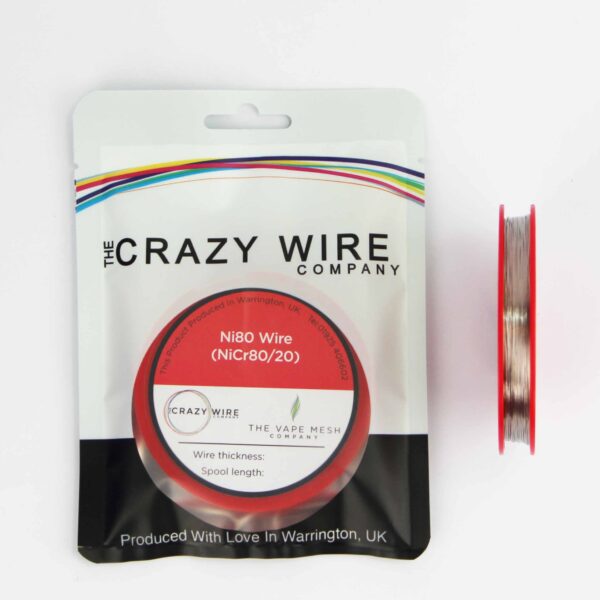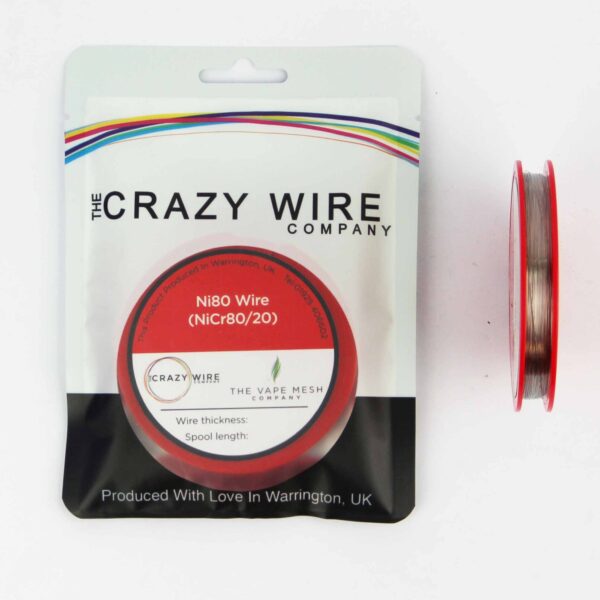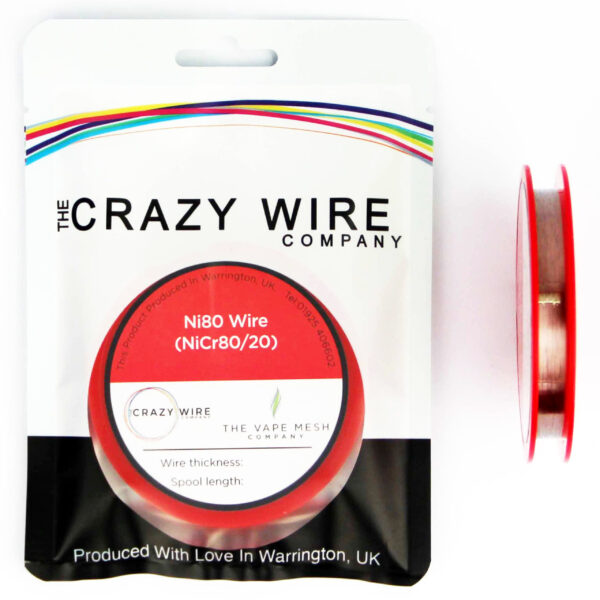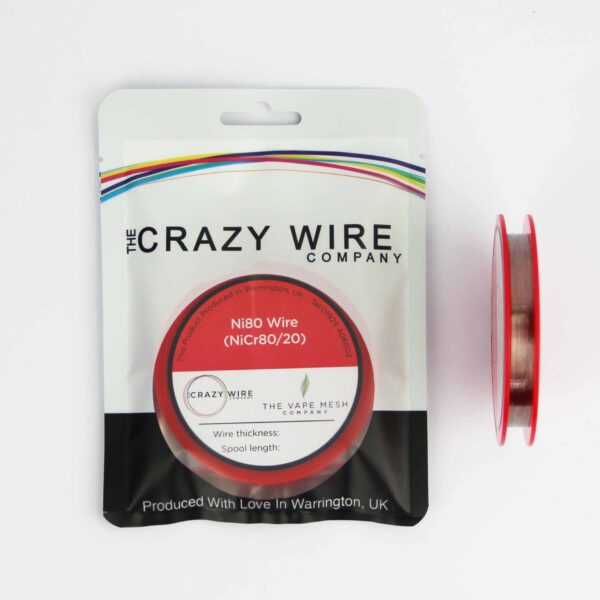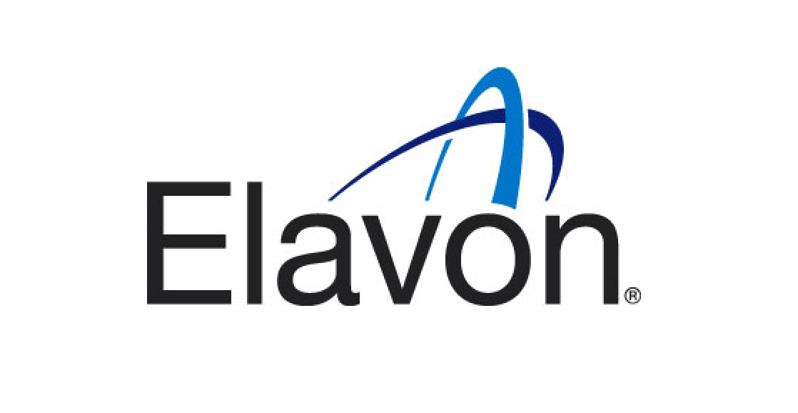Description
0.23mm Resistance Wire For Heating
The Crazy Wire Company are well known as suppliers of top quality resistance wire for heating. We have enormous stock levels at all times, as we use this wire to weave our high specification woven mesh products. Our brilliant staff are experts in producing our spools of round wire on our 6 rapid action winding machines. All spools are produced to carry a little extra length to make up for any waste when handling the product.
The 0.23mm (31 AWG) nichrome resistance wire for heating is a versatile and efficient choice for a variety of applications. Nickel and chromium alloy nichrome is known for its high resistance to corrosion and outstanding oxidation resistance at high temperatures. With these properties, it is particularly suitable for numerous heating applications requiring consistent and reliable performance. A 0.23mm diameter provides a balance between flexibility and durability, ensuring ease of use and long-term performance.
The rapid heating response of nichrome makes it an ideal resistance wire for heating. It allows devices to reach desired temperatures quickly. As a result of its stability at high temperatures, wire degradation is also reduced. In addition to small appliances, laboratory heaters, ceramic kiln elements, and industrial machines, heating elements in ceramics are widely used. Wire can also be used in art and craft projects that require controlled heating, such as in the production of jewelry. Combined with its resistance to oxidation, this nichrome wire ensures optimal performance and long life for devices using it.
It’s important to note that the properties of Nichrome 80 wire, including its resistance, will be affected by factors such as temperature, length, and cross-sectional area. To ensure that the wire is used safely and effectively, it’s important to follow manufacturer’s recommendations and guidelines.
Key product details:
- Diameter – 0.23mm (23 Micron – 31 AWG)
- Ohms/m – 26.46
- Technical Specification:
- Ni – Rest
- Cr – 20.0 – 23.0
- Fe – <1.0
- Max Continuous Service Temp Of Element – 1200
- Micrographic Structure – Austenite
- Magnetic Properties – Nonmagnetic
- Electrical resistance is high
- Corrosion resistance is high
Why Use The Crazy Wire Company
- Quality of products: The Crazy Wire Company always offer high-quality products that meet industry standards and customer expectations.
- Selection: We offer a wide variety of wire products and sizes to meet the diverse needs of our customers. We have more than 600 products available through our site and counting.
- Price: We always offer the best value possible. Our wires are available as part of our major weaving processes, so it is bought at the best possible rate.
- Availability: Our products are kept in house and are ready to ship immediately.
- Customer service: Our experienced staff help our customers feel confident in their purchases and provide assistance when required.
What Else Is Available?
We do not only offer Ni80 round wire. We also have a huge range of KA1 and stainless steel round wire in immediate stock too.
Ribbon wire and flat wire are stocked for immediate dispatch too.
FAQs About This Wire
Which Resistance Wire For Heater?
The choice of resistance wire for a heater depends on several factors, including:
Operating temperature: Different resistance wire materials have different maximum operating temperatures, so it’s important to choose a wire that can handle the temperatures required for the specific heating application.
Resistance: The resistance of the wire will affect the amount of heat generated, so it’s important to choose a wire with the correct resistance for the specific heating application.
Cost: The cost of the wire can be a significant factor in the choice of material, so it’s important to consider the cost-effectiveness of different options.
Availability: Some resistance wire materials may not be readily available in certain regions, so it’s important to consider the availability of the material.
Based on these factors, Nichrome 80 is a common choice for resistance wire in heating applications due to its relatively high resistance, ability to withstand high temperatures, and relatively low cost. Other materials that are commonly used in heating applications include iron-chromium-aluminium (FeCrAl) alloys and copper-nickel (CuNi) alloys.
Does Wire Resistance Increase With Temperature?
Yes, wire resistance generally increases with temperature. This is because an increase in temperature causes the atoms in a conductor to vibrate more, making it more difficult for electrons to flow through the material. This increase in resistance can cause the wire to heat up even more, leading to a vicious cycle.
The relationship between temperature and resistance is typically described by the temperature coefficient of resistance, which is a measure of how much the resistance of a conductor changes with temperature. For many materials, including Nichrome 80, the temperature coefficient of resistance is positive, meaning that the resistance of the material increases with temperature.
It’s important to keep in mind that the relationship between temperature and resistance is not always linear and can vary depending on the material, the wire diameter, and other factors. To ensure that the resistance calculation is accurate, it’s important to consider these factors and make any necessary adjustments.
Heater Wire Resistance Calculation
The resistance of a heater wire can be calculated using the following formula:
R = ρ * L / A
Where:
R = resistance (Ω)
ρ = resistivity of the wire material (Ωm)
L = length of the wire (m)
A = cross-sectional area of the wire (m^2)
The resistivity of Nichrome 80, a commonly used material for heating elements, is approximately 1.10 × 10^-6 Ωm.
To use the formula, you will need to know the length and cross-sectional area of the wire. Once you have these values, you can calculate the resistance of the wire by plugging them into the formula.
It’s important to note that the resistance of a heating wire is also affected by factors such as temperature and wire diameter. To ensure that the resistance calculation is accurate, it’s important to consider these factors and make any necessary adjustments.
What Type Of Wire For Furnace?
The type of wire used for a furnace will depend on several factors, including:
- Operating temperature: The wire must be able to withstand the temperatures encountered in the furnace, so it’s important to choose a wire with a high maximum operating temperature.
- Resistance: The resistance of the wire will affect the amount of heat generated, so it’s important to choose a wire with the correct resistance for the specific heating application.
- Durability: The wire must be able to withstand the harsh conditions inside a furnace, including high temperatures and potential exposure to corrosive materials, so it’s important to choose a wire that is durable and long-lasting.
- Cost: The cost of the wire can be a significant factor in the choice of material, so it’s important to consider the cost-effectiveness of different options.
- Availability: Some wire materials may not be readily available in certain regions, so it’s important to consider the availability of the material.
Based on these factors, FeCrAl alloys are a common choice for furnace wire due to their high resistance, high maximum operating temperature, and durability. Nichrome 80 is another commonly used material for furnace wire due to its relatively high resistance, ability to withstand high temperatures, and relatively low cost.
Check out our blog ‘what is nichrome‘ for more information on ni80 wire in general. Our goal for our blogs and help guides is to answer as many questions as possible to help to explain the possibilities of mesh to our customers.
We also offer similar products through our highly popular eBay store, check us out there too.
Contact our team today if you have any questions at all. We are always really keen to help in any way that we can.

